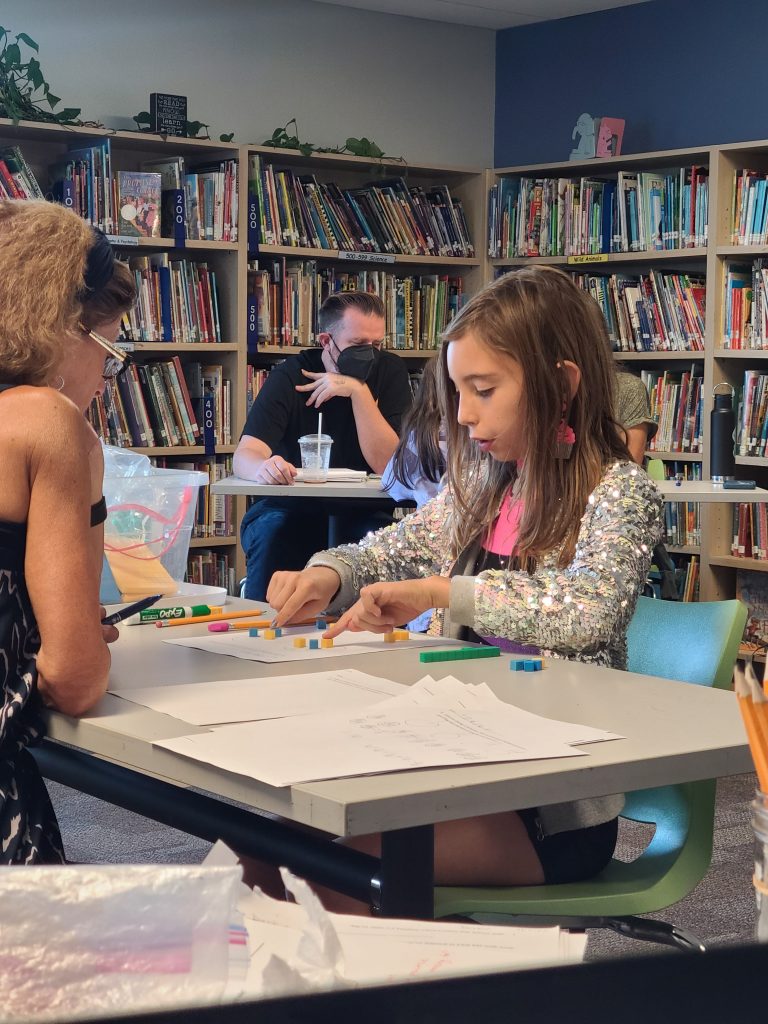
CGI Math: A Teacher’s Approach to Mathematic Confidence
By Christine Stedman, 2nd Grade Teacher at CCDS
As a teacher, using Cognitively Guided Instruction in my classroom has been unbelievably rewarding. Before being introduced to this way of teaching math, my classroom lessons consisted of me standing up in front of the classroom with all of my students on the same workbook page with pencil in hand. I was the one doing all of the talking as my students followed each step that I wrote down on the whiteboard into their workbooks step by step. We recited poems to help us remember the steps to borrowing in subtraction, “more on the floor, go next door.” Most students were able to follow the procedures, but most also had no idea why they were doing it or why it worked.
This was the way I learned math growing up, and I hated math. I never thought that I was good at it, and the truth is I wasn’t because what I finally realized all these years later is that I had no true number sense. I knew how to line up the numbers above and below each other when adding and subtracting. I knew how to cross off the zero and carry the one, but if you asked me to add 38+42 in my head, I would have had to mentally picture the 38 above the 42 and add 8+2=10, keep the zero, carry the one, etc. This is not the future I hope for my math students.
Now back to me in front of the whiteboard in my classroom, telling students how to follow standard algorithms. Boring! Not only boring, but frustrating. Most students could follow the procedure, but were they engaged and excited about math? The clear and resounding answer to this question is NO! But, this was how I learned math, so it must be what we do, right?
As a teacher and especially a primary grade teacher this type of teaching is so uninspired and non-creative. One of the best parts of teaching for me is using what I know about my students to inspire and engage them, and this was just not happening during my math lessons at all. So, when an opportunity for some professional development in math came up, I jumped at the opportunity. Enter Cognitively Guided Math.
Cognitively Guided Math is a model of math instruction that is student-centered and starts with what students already know, then builds on their natural number sense and fosters their intuitive approaches to problem solving. This model of instruction is multi-faceted because it connects with social-emotional learning as well as project based learning. CGI Math provides this higher quality of learning that is reflected in retention, transfer, solving problems, articulating ideas, persistence, and seeing oneself as a capable thinker and learner.
CGI math is not a curriculum; teachers develop their own instructional materials and practices from watching and listening to their students solve problems. When developing curriculum and lesson plans for using Cognitively Guided Instruction in my classroom, building number sense and fluency is the core of where I begin. Daily number routines that include strategies such as making ten and using double facts help strengthen students’ number sense and fluency. In addition, using the hundreds chart to look for patterns in numbers is an engaging way to practice place value, counting up, counting down, and skip counting, which leads to multiplication strategies.
When it comes to planning my daily math lesson I must first consider what math concept I want students to come away with. I then write a word problem to go along with the concept. I try to use something familiar to them in the content of the problem, or something that we are studying at the time or the names of people they know. Here’s an example involving Mrs. Towner and her dog Jet, who frequently visits our campus:
Jet the dog had 16 bones, then Mrs. Towner gave him 14 more. How many bones does Jet have now?
It’s inspiring to see the different strategies students use to solve this problem. Some students might use pictures to draw out the bones. Some might use manipulatives to count out the numbers, then combine them to get the answer – a strategy called direct modeling. Another strategy students might use to solve this problem is their knowledge of base ten. This is where the student will add up the ones (4+6) to get ten and then add it to the other 2 tens to get 30. This strategy is an invented algorithm, and when students are able to use these mental strategies consistently and over time, they are deeply understood. The invented algorithm strategy shows a student has good number sense and fluency.
With CGI Math, the key is meeting students where they are, using their unique problem-solving approach as a starting point. From there, we introduce more strategies that build upon their understanding. As students share and explain their work, their confidence builds and they become motivated to push themselves as they see that math makes sense and is meaningful in their lives.
(part 1 of a 3 part series on CGI Math)